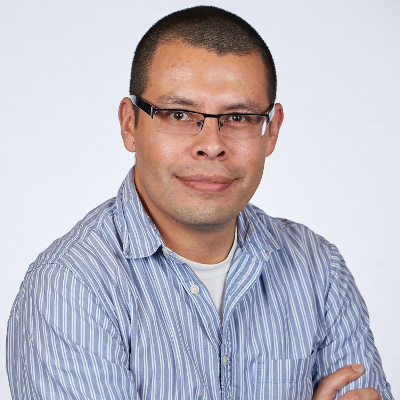
Alfredo Picado
My name is Alfredo Picado and I am a native of Costa Rica. I studied chemistry at University of Costa Rica before moving to the USA for graduate school. I obtained my Ph.D. in Organic Chemistry from Clemson University in South Carolina unde
…My name is Alfredo Picado and I am a native of Costa Rica. I studied chemistry at University of Costa Rica before moving to the USA for graduate school. I obtained my Ph.D. in Organic Chemistry from Clemson University in South Carolina under the supervision of Dr. Karl Dieter. My research was focused on the development of new organocopper reagents for synthesis of highly functionalized synthons and heterocycles.
During my graduate studies I spent 1 year at GlaxoSmithKline in Philadelphia, working on the synthesis of small molecule inhibitors of ion channels involved in heart failure. During this time I developed a keen interest in medicinal chemistry and drug discovery.
After finishing my doctoral degree, I taught organic chemistry and biochemistry at Pfeiffer University, a private college in North Carolina.
Currently, I am a postdoctoral researcher in the SGC at the University of North Carolina Chapel Hill working under the supervision of Dr. David Drewry. I am currently developing chemical probes for the understudied protein kinases MST1-4 and MAP3K2. My research is jointly funded by the NIH and Luceome Biotechnologies.
Alfredo Picado, Ph.D.
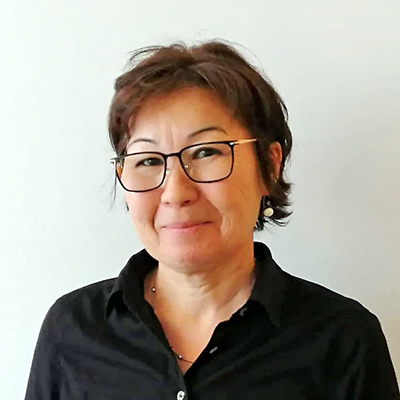
Alma Seitova
Alma received her MSc degree from Kazakh State University and her PhD from Institute of General Genetics at the Academy of Science in Moscow, Russia. She joined SGC, Toronto in 2005. Currently, Alma is leading the Eukaryotic Expression
…Alma received her MSc degree from Kazakh State University and her PhD from Institute of General Genetics at the Academy of Science in Moscow, Russia. She joined SGC, Toronto in 2005. Currently, Alma is leading the Eukaryotic Expression Platform (EEP) dedicated to the high-throughput (HTP) test expression and production of challenging proteins/protein complexes, which require eukaryotic expression machinery including Baculovirus mediated and BacMam/Mammalian expression systems. The EEP team optimizes a pipeline that includes designing expression constructs, choosing expression systems, cloning, test expression, production, and purification of milligram quantities of various recombinant proteins. The EEP platform is currently producing high-quality SARS-CoV-2 ( COVID19) related proteins, specifically S-Ectodomain, RBD of the Spike and human ACE2, as a part of The Toronto Open Access COVID-19 Protein Manufacturing Center and makes proteins available to any Canadian scientist conducting COVID-19 research (www.youtube.com/watch?v=bYkoyX5T9fE).
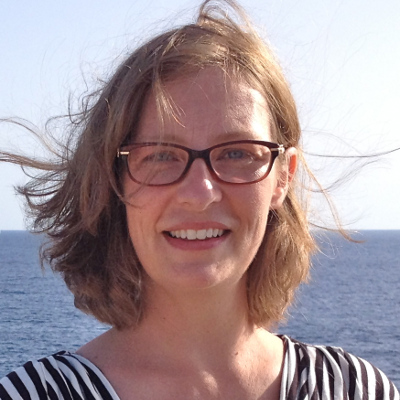
Amy Ramsey
Dr. Ramsey is an Associate Professor in the Department of Pharmacology and Toxicology at the University of Toronto. She earned a B.S. in Microbiology from the University of Kentucky, and a Ph.D. in Genetics and Molecular Biology from the Un
…Dr. Ramsey is an Associate Professor in the Department of Pharmacology and Toxicology at the University of Toronto. She earned a B.S. in Microbiology from the University of Kentucky, and a Ph.D. in Genetics and Molecular Biology from the University of North Carolina at Chapel Hill. Her postdoctoral training was conducted with Dr. Marc Caron at Duke University Medical Center. As a graduate student at UNC, she developed a mouse model with a genetic deficiency of NMDA receptors caused by a mutation in Grin1. Since the creation of the mice in 1999, Dr. Ramsey has studied the physiological and behavioural consequences of Grin1 loss-of-function. She began working with GRIN families in 2018 to discover treatments for patients using mice that carry disease-causing mutations in Grin1, and serves a member of the scientific advisory board for CureGRIN.
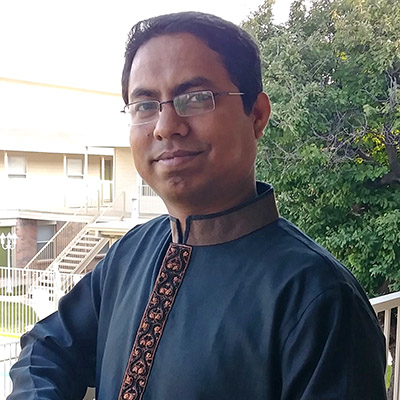
Anwar Hossain
I completed my Ph.D. degree from Texas Tech University Health Sciences Center, Department of Pharmaceutical Sciences, Amarillo, Texas, USA. My Ph.D. training was focused on the development of novel bioactive molecules. Recently, I joined th
…I completed my Ph.D. degree from Texas Tech University Health Sciences Center, Department of Pharmaceutical Sciences, Amarillo, Texas, USA. My Ph.D. training was focused on the development of novel bioactive molecules. Recently, I joined the Lab of SGC-UNC under the supervision of Dr. David Drewry. Here in the SGC-UNC, I am working on developing and synthesizing chemical scaffolds targeting rare cancer 'Chordoma'.
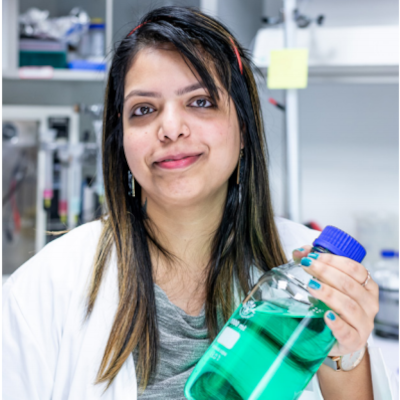
Arunima

Ashley Hutchinson
Ashley earned her advanced diploma form Sir Sandford Fleming College, where she was awarded the Dean’s Award, for top marks and for her commitment to the field of community and science. Ashley joined SGC under the tutelage o
…Ashley earned her advanced diploma form Sir Sandford Fleming College, where she was awarded the Dean’s Award, for top marks and for her commitment to the field of community and science. Ashley joined SGC under the tutelage of Dr. Alma Seitova to work on Eukaryotic Expression platform, including Baculovirus mediated expression system for protein production and purification. Currently Ashley is involved in structural characterization of WDR41-SMCR8-C9ORF72 trimeric complex under the supervision of Dr. Levon Halabelian, which brings us to the open lab notebook.

Ben Eduful
Benjamin Eduful studied chemistry at the University of Cape Coast, Ghana, and with a strong interest in drug discovery and development, and the study of the interactions between xenobiotics and living systems, he pursued a MS in Clinical Ph
…Benjamin Eduful studied chemistry at the University of Cape Coast, Ghana, and with a strong interest in drug discovery and development, and the study of the interactions between xenobiotics and living systems, he pursued a MS in Clinical Pharmacology at the University of Aberdeen, Scotland, UK.
He completed his PhD in Medicinal Chemistry at the University of South Florida under the direct supervision of Prof. James W. Leahy. Benjamin’s dissertation was focused on the design, synthesis and biological evaluation of small molecules as treatment for infectious and neurodegenerative diseases.
He joined SGC at the University of North Carolina as a postdoctoral researcher in April 2018, working under Professor David Drewry. Benjamin’s research work is focused on the design and synthesis of small-molecule inhibitors for historically understudied protein kinases (specifically the Calcium/calmodulin-dependent protein kinase kinase 2, CaMKK2).

Benjamin Dai
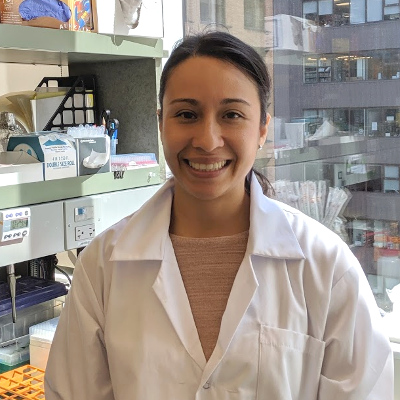
Claudia Alvarez
Claudia completed her PhD in Chemistry in 2018 under the supervision of Dr. Voula Kanelis at the University of Toronto. She studied the structural and functional consequences of diabetes- and hyperinsulinism-causing mutations in an ABC
…Claudia completed her PhD in Chemistry in 2018 under the supervision of Dr. Voula Kanelis at the University of Toronto. She studied the structural and functional consequences of diabetes- and hyperinsulinism-causing mutations in an ABC transporter protein called the sulfonylurea receptor using NMR, fluorescence spectroscopy and other biophysical techniques.
She is working as a postdoctoral fellow at the SGC under the supervision of Dr. Cheryl Arrowsmith. Claudia's research focuses on determining the crystal structure and function of individual domains of the huntingtin protein, in order to elucidate its role in Huntington disease.
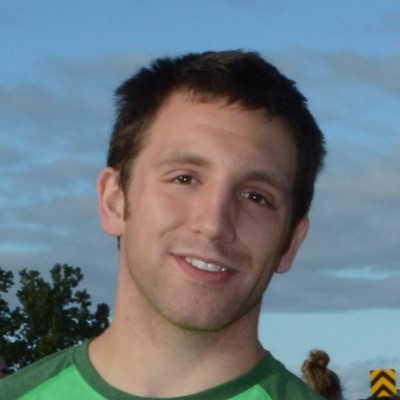
Danton Ivanochko
Danton is a PhD candidate in the department of Medical Biophysics at the University of Toronto. Working under the supervision of Dr. Cheryl Arrowsmith, Danton’s PhD research has employed structural biology, biophysics, and bioinformat
…Danton is a PhD candidate in the department of Medical Biophysics at the University of Toronto. Working under the supervision of Dr. Cheryl Arrowsmith, Danton’s PhD research has employed structural biology, biophysics, and bioinformatics, to uncover important biology related to methyltransferase enzymes. Additionally, Danton received a Mitacs Accelerate Fellowship to work on a PROTAC-development project at Boehringer Ingelheim in Vienna, Austria. Prior to coming to Toronto, Danton received his BSc in Biochemistry and an MSc in Human Molecular Genetics from the University of Ottawa under the supervision of Dr. David Picketts, where he studied how epigenetic mechanisms regulate neurodevelopment.

David Dilworth
David is a postdoctoral fellow in the Cell Biology Group at the Structural Genomics Consortium Toronto. His research focuses on the epigenetic determinants of cancer, with an interest in how the transcriptional networks that drive the disea
…David is a postdoctoral fellow in the Cell Biology Group at the Structural Genomics Consortium Toronto. His research focuses on the epigenetic determinants of cancer, with an interest in how the transcriptional networks that drive the disease are established and maintained. David received his PhD in Biochemistry from the University of Victoria, Canada. His doctoral work focused on a noncovalent chromatin modification called proline isomerization. This research identified several novel functions for the nuclear proline isomerase FKBP25 in the maintenance of genomic stability. At the SGC, David will be using chemical probes (ie. precision inhibitors) that target epigenetic pathways relevant to human disease to study chromatin-centric phenomenon.
A complete list of David’s publications can be found here.

David Drewry
David Drewry, Ph.D., is a leader in the medicinal chemistry of protein kinases and is one of the principal architects of the research strategy at the SGC-UNC to build an open and collaborative research network to promote target discovery. H
…David Drewry, Ph.D., is a leader in the medicinal chemistry of protein kinases and is one of the principal architects of the research strategy at the SGC-UNC to build an open and collaborative research network to promote target discovery. He previously enjoyed more than 24 years as a medicinal chemist with GlaxoSmithKline and legacy companies, where he led teams working across the preclinical spectrum of drug discovery. His research interests include the art and science of medicinal chemistry, kinase inhibitor design, utilization of annotated sets of kinase inhibitors to build understanding of signaling networks and precompetitive chemical biology to facilitate target identification. After earning a Bachelor’s of Science degree, cum laude, in chemistry from Yale University, Drewry earned his doctorate at the University of California, Berkeley in the laboratory of Paul Bartlett, working on the design, synthesis and mechanistic studies of zinc protease inhibitors. David spent one year as the head of chemistry at Meryx Pharmaceuticals, a biotech startup focused on small-molecule inhibitors of Mer kinase that was a spinoff from the UNC Eshelman School of Pharmacy. Now at the SGC-UNC in the UNC Eshelman School of Pharmacy, he focuses on building the KCGS (Kinase Chemogenomics Set, more information here https://www.sgc-unc.org/kcgs), design of chemical probes for understudied kinases, and finding treatments for the rare cancer chordoma. For chordoma, his lab is working on discovery of ligands that bind to the transcription factor TBXT, a key vulnerability of chordoma. This collaborative lead discovery project incorporates x-ray crystallography and structure based drug design, organic synthesis and iterative medicinal chemistry, and biophysical assays to measure affinity.
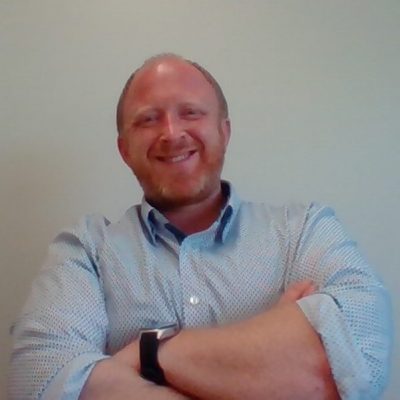
David Rogers
David is a Postdoctoral Research Associate in the Center for Integrative Chemical Biology and Drug Discovery at the University of North Carolina at Chapel Hill. He earned a B.S. in Chemistry from East Central University, and a Ph.D. in Che
…David is a Postdoctoral Research Associate in the Center for Integrative Chemical Biology and Drug Discovery at the University of North Carolina at Chapel Hill. He earned a B.S. in Chemistry from East Central University, and a Ph.D. in Chemistry from the University of Tulsa. As a graduate student at TU, he developed methodology for visible light-activated C-X and C-N bond-formation using common and inexpensive organic dye photoredox catalysts. David joined the TREAT-AD program (www.treatad.org) in 2020, with the goal of accelerating drug development for treatment of Alzheimer's disease.
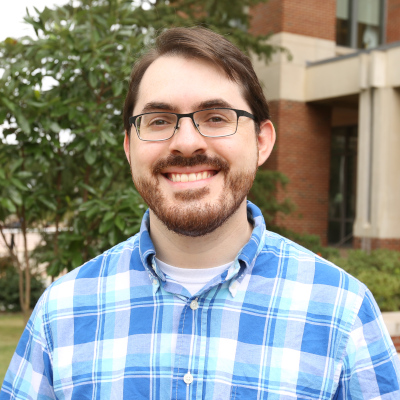
Edward Anderson
Ed is a postdoctoral research associate at the UNC Catalyst for Rare Diseases. His research is aimed at identifying genetic modifiers and drug targets for Batten disease, a rare childhood neurodegenerative disorder. While in the Catalyst, E
…Ed is a postdoctoral research associate at the UNC Catalyst for Rare Diseases. His research is aimed at identifying genetic modifiers and drug targets for Batten disease, a rare childhood neurodegenerative disorder. While in the Catalyst, Ed has also contributed to Chordoma drug discovery and repurposing projects, working with David Drewry at SGC-UNC and Sean Ekins at Collaborations Pharmaceuticals. Ed earned his PhD in 2018 from the Molecular Biology, Cell Biology and Biochemistry graduate program at Brown University. His thesis research in the laboratory of Dr. Kristi Wharton focused on the regulation of Bone Morphogenetic Protein signaling by post-translational modification, discovering that alternatively cleaved signaling proteins have distinct developmental functions and receptor specificity.

Elizabeth Zoeller
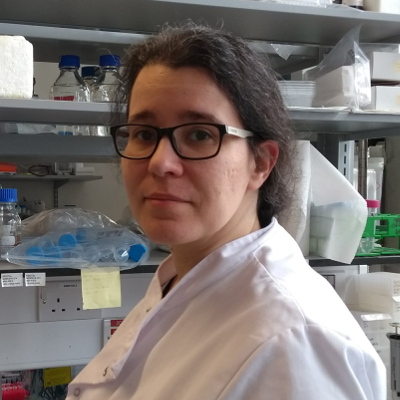
Ellie Williams
Ellie Williams studied the structure and dynamics of HSP90 at University College London. After graduation she came to work at the SGC and has been working in the lab of Alex Bullock since 2010. Her work has been focusing on understanding th
…Ellie Williams studied the structure and dynamics of HSP90 at University College London. After graduation she came to work at the SGC and has been working in the lab of Alex Bullock since 2010. Her work has been focusing on understanding the mutations in ALK2 which cause the rare connective tissue disorder Fibrodysplasia Ossificans Progressiva (FOP) – She has spent her time looking at the structure of ALK2 by x-ray crystallography, characterising the binding of drug molecules and compounds to the protein, investigating the specificity of binding, looking at the interaction of ALK2 with its interacting partners and characterising the effect of mutations on binding and activity. Her work is funded by the UK charity, FOP Friends.
Since 2015 she has also been responsible for the public engagement activity within the SGC in Oxford, organising schools visits, festival participation and art exhibitions. When not in the lab Ellie spends her time costume making, reading and looking after her daughter.

Eve Carter
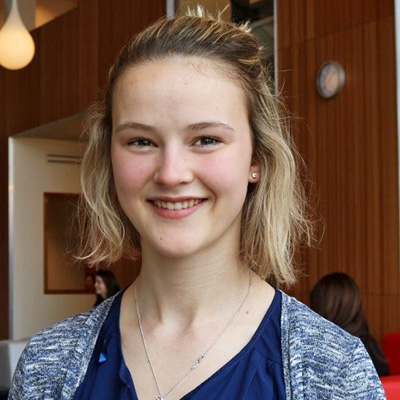
Evianne Rovers
Evianne graduated from Amsterdam University College with a B.Sc Liberal Arts and Sciences with Distinction in the tracks Biomedical Sciences and Chemistry in July 2020 and is now a M.Sc student with Direct-entry in the PhD program at the Un
…Evianne graduated from Amsterdam University College with a B.Sc Liberal Arts and Sciences with Distinction in the tracks Biomedical Sciences and Chemistry in July 2020 and is now a M.Sc student with Direct-entry in the PhD program at the University of Toronto, Department of Pharmacology and Toxicology. At the Structural Genomics Consortium, she is working under the supervision of Matthieu Schapira on a bioinformatics project called the Ligandable Human Genome. In this project, potential binding pockets are identified and analyzed in the known PDB structures of the human genome. The next step is to determine if a pocket is either catalytic or non-catalytic by using the MCSA and Interpro database. The goal for this project is to identify non-catalytic pockets that could potentially be exploited for the design of ProxPharm chemicals (i.e. PROTACs). Outside the lab, Evianne enjoys playing for the Varsity Women’s Field Hockey team of UofT, going on hiking trips, being first year representative for thesis-based pharmacology program and spending time with friends and family.
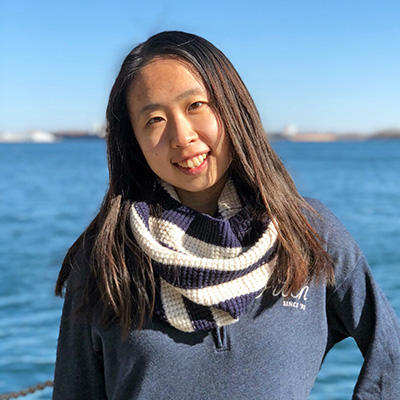
Fang-Chi Chang
Fang-Chi is a fourth-year undergraduate student specializing in Pharmacology and majoring in Biochemistry. She is currently working in Dr. Dalia Barsyte-Lovejoy’s lab for her fourth-year thesis project. The main focus of this project
…Fang-Chi is a fourth-year undergraduate student specializing in Pharmacology and majoring in Biochemistry. She is currently working in Dr. Dalia Barsyte-Lovejoy’s lab for her fourth-year thesis project. The main focus of this project is on the interactions of WDR proteins, specifically the WDR12, WDR55, and BOP1 proteins, and how they affect the cancer cells via their role in ribosomal biogenesis.

Felix Nwogbo
Felix joined the UNC School of Pharmacy’s Center of Chemical Biology and Drug Discovery as a postdoctoral research associate in Kenneth Pearce’s group. His research focuses on developing high-quality research tools and technologies to v
…Felix joined the UNC School of Pharmacy’s Center of Chemical Biology and Drug Discovery as a postdoctoral research associate in Kenneth Pearce’s group. His research focuses on developing high-quality research tools and technologies to validate and advance the next generation of drug targets for Alzheimer’s disease (AD). Specifically, he is developing biochemical assays for less-understood targets and pathways which may contribute to AD. Felix earned his PhD in 2018 from the Chemistry graduate program at Duke University. His thesis research in the laboratory of Dr. Dewey McCafferty focused on repurposing arylcyclopropylamines as chemical probes to elucidate the mechanism of action of novel non-dopaminergic pathways to treat motor-deficits associated with Parkinson’s disease using a dopamine-deficient dopamine transporter knockout mouse model.

Frances Potjewyd
Frances is a postdoctoral research associate at the SGC-UNC developing chemical probes for Alzheimer’s disease under the supervision of Dr Alison Axtman. Frances obtained her Master of Chemistry degree from the University of Liverpool, UK
…Frances is a postdoctoral research associate at the SGC-UNC developing chemical probes for Alzheimer’s disease under the supervision of Dr Alison Axtman. Frances obtained her Master of Chemistry degree from the University of Liverpool, UK, and completed her PhD in Medicinal Chemistry at The University of Strathclyde, UK. She continued research as a Chemical Biology postdoctoral research associate in the Center for Integrative Chemical Biology and Drug Discovery (CICBDD) at UNC under the supervision of Prof Stephen Frye and Prof Lindsey James. Postdoctoral research focused on the design, synthesis, and biological evaluation of Proteolysis Targeting Chimeras (PROTACs) for epigenetic regulators such as Polycomb Repressive Complex 2 (PRC2).
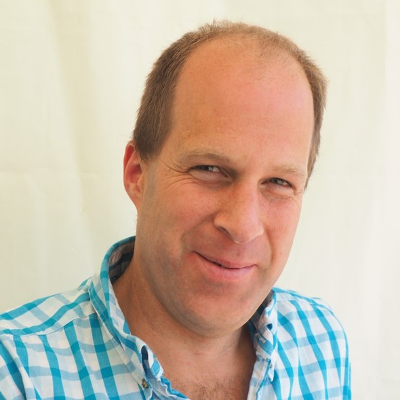
Frank von Delft
Frank has been head of the PX group since the start of the SGC in 2004, focussing on methodology and high-throughput techniques for protein crystallography. In late 2012 he joined the Diamond Light Source synchrotron as head of beamline I04
…Frank has been head of the PX group since the start of the SGC in 2004, focussing on methodology and high-throughput techniques for protein crystallography. In late 2012 he joined the Diamond Light Source synchrotron as head of beamline I04-1. In this role he is working to make Fragment Screening by X-ray Crystallography an easily accessible and routine experiment for both academic and industrial users.
Frank received his undergraduate degree from the University of the Free State (Bloemfontein, South Africa), and gained his PhD in protein crystallography under Tom Blundell at Cambridge (UK). He has also worked as a postdoc in San Diego (academically at Scripps in the JCSG, industrially at Syrrx in its pre-Takeda days). He is a visiting professor at the Biochemistry Department of the University of Johannesburg.
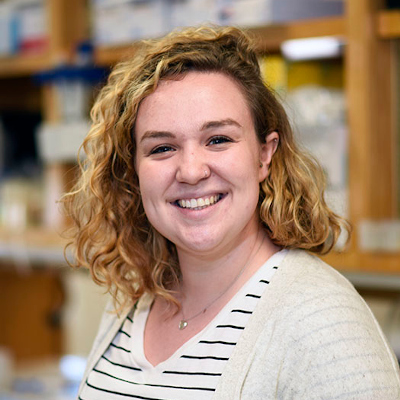
Hadley Sheppard
Hadley began studying chordoma during her PhD at Baylor College of Medicine. Since completing her program, Hadley is an incoming Post-Doctoral Fellow in the lab of Paul Workman at the Institute of Cancer Research (ICR). Together in
…
Hadley began studying chordoma during her PhD at Baylor College of Medicine. Since completing her program, Hadley is an incoming Post-Doctoral Fellow in the lab of Paul Workman at the Institute of Cancer Research (ICR). Together in collaboration with the labs of Opher Gileadi and David Drewry, Hadley and the team at ICR will work to directly drug the transcription factor brachyury - a unique transcriptional addiction in chordoma.
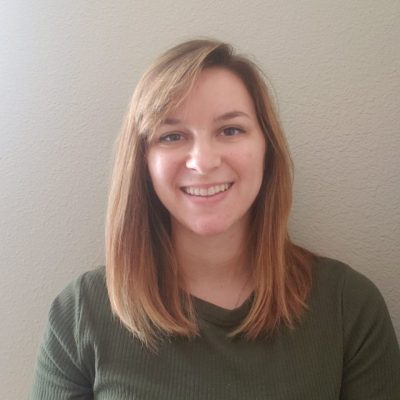
Ivie Conlon
I received my PhD at the University of Maryland, Baltimore in 2020 where my research focused on developing dual inhibitors targeting the oncoproteins Mcl-1 and HDM2. I gained skills related to organic synthesis and medicinal chemistry. Afte
…I received my PhD at the University of Maryland, Baltimore in 2020 where my research focused on developing dual inhibitors targeting the oncoproteins Mcl-1 and HDM2. I gained skills related to organic synthesis and medicinal chemistry. After completing my dissertation, I joined Dr. Xiaodong Wang’s lab in the CICBDD at University of North Carolina at Chapel Hill as a postdoctoral research associate. Here, my studies focus on developing chemical probes to treat Alzheimer’s disease under the TREAT-AD project.
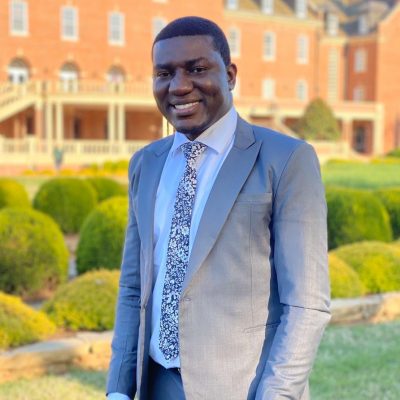
Joel Annor-Gyamfi
Joel earned his BSc in Chemistry from the University of Cape Coast, Ghana, and MSc in Organic Chemistry from East Tennessee State University, where his research was focused on the synthesis, characterization and biological evaluation of pyr
…Joel earned his BSc in Chemistry from the University of Cape Coast, Ghana, and MSc in Organic Chemistry from East Tennessee State University, where his research was focused on the synthesis, characterization and biological evaluation of pyrrolo[2,1-c][1,4]benzodiazepines for cytotoxicity and serine β-lactamases inhibition. He completed his PhD in Organic Chemistry at the Oklahoma State University under the direct supervision of Prof. Richard A. Bunce. Joel’s dissertation involved the use of efficient synthetic strategies for the design and synthesis of ring-fused nitrogen heterocycles. As part of the research work, he generated small molecules as chemical probes to combat some Gram-negative bacterial infections. These compounds have functionality positioned to fit into the active site of bacterioferritin and interact favorably with amino acids located around this site. He joined SGC at the University of North Carolina in June 2020 as a postdoctoral researcher within the UNC Eshelman School of Pharmacy, working under Dr. Alison Axtman. Joel’s primary research work is focused on the design and synthesis of small-molecule chemical probes to modulate unexplored protein targets implicated in Alzheimer’s Disease. Concurrently, he has directed efforts towards the creation of lead compounds as high-quality tools for understudied kinase targets (specifically microtubule affinity-regulating kinase 3 and 4, MARK3/4).
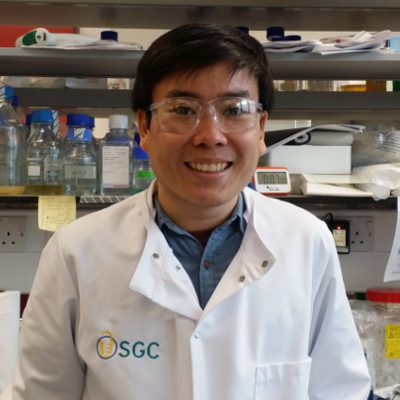
Jong Fu Wong
Jong Fu Wong studied the novel cytosolic roles of epigenetic modifier EZH2 for his PhD at Nanyang Technological University (NTU), Singapore. After graduating, he decided to delve into more application-oriented studies. He now works for the
…Jong Fu Wong studied the novel cytosolic roles of epigenetic modifier EZH2 for his PhD at Nanyang Technological University (NTU), Singapore. After graduating, he decided to delve into more application-oriented studies. He now works for the Structural Genomics Consortium (SGC) at Oxford University as a Cell Biologist under the supervision of Associate Professor Alex Bullock.
He is funded by The Brain Tumour Charity to help expedite the development of treatment for Diffused Intrinsic Pontine Gliomas (DIPG), a rare form of brain cancer that occurs in young children. Specifically, using patient-derived DIPG cell lines, he is screening through iterations of compounds rationally-designed by Professor Paul Brennan’s team based in Target Discovery Institute (TDI) to identify ones that can potently yet selectively inhibit ACVR1/ALK2, a kinase frequently mutated in DIPG. Similar ACVR1/ALK2 mutations are also responsible for the development of Fibrodysplasia Ossificans Progressiva (FOP), another rare genetic disease where connective tissues progressively ossified, freezing joints permanently and restrict movement. Therefore, compounds identified from the screens will also contribute to the development of FOP treatment.
Besides that, he is interested to unravel some of the underlying mechanistic causes of DIPG and to explore the prospect of combination treatment. His many alter egos include an aspiring aquarist, a food junky and a dummy Judoka.

Jose Brandao-Neto
The main focus of my current research is twofold:
i) the nucleotide metabolism of Schistosoma mansoni using structural molecular biology, an effort that has led to the determination of 8 novel structures and a total of 19
…The main focus of my current research is twofold:
i) the nucleotide metabolism of Schistosoma mansoni using structural molecular biology, an effort that has led to the determination of 8 novel structures and a total of 19 unique proteins solubilised between 2014 and 2018.
ii) improving the quality of crystallographic models by introducing excited states, which will allow for direct interpretation of behaviour of metal centres in XFEL and synchrotron alike, a step beyond what is currently done through indirect assessment with multiple spectroscopic techniques.
At the beamline level, I am interested in methods for improving the throughput while keeping the same data quality level, optimising the usage of the hardware, and developing standards for quantitative assessment of diffraction from protein crystals.
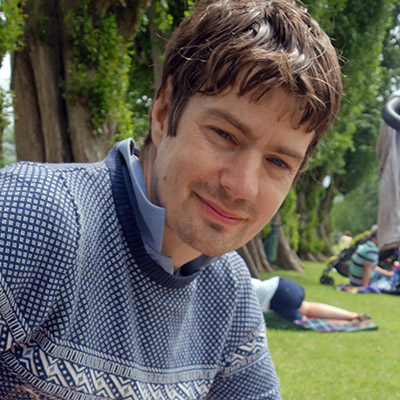
Joseph Newman
I studied my undergraduate degree in Biochemistry at the University of Edinburgh and did a PhD in crystallography in the University of Sheffield working in the lab of Prof David Rice. Following my PhD I did a postdoc at the University of Ne
…I studied my undergraduate degree in Biochemistry at the University of Edinburgh and did a PhD in crystallography in the University of Sheffield working in the lab of Prof David Rice. Following my PhD I did a postdoc at the University of Newcastle with Prof Rick Lewis. I am currently a senior Post Doctoral Scientist based in the laboratory of Prof Opher Gileadi at the Structural Genomics Consortium, University of Oxford, UK. My research is focused on determining the structures and mechanisms of human proteins of therapeutic interest with a particular focus on proteins involved in the maintenance of genome integrity and DNA repair pathways. I have a broad background in biochemistry and specific expertise in structural biology primarily through the field of X-ray crystallography, which has been my primary research tool throughout my PhD and postdoctoral studies.
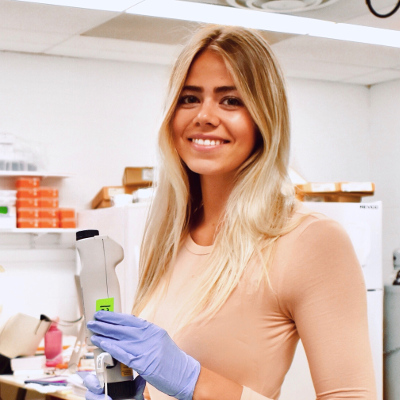
Katheron Intson
Kath is a PhD candidate at the University of Toronto. While earning a BScH from Queen’s University, she began working under Dr. Amy Ramsey to study potential drug treatments for abnormal behaviours in Grin1 loss-of-function mice. Sinc
…Kath is a PhD candidate at the University of Toronto. While earning a BScH from Queen’s University, she began working under Dr. Amy Ramsey to study potential drug treatments for abnormal behaviours in Grin1 loss-of-function mice. Since beginning her doctorate with Amy, she has focused on contributions of different populations of NMDA-receptor-containing cells to brain function and the physiological consequences of social isolation.

Liz Brown
I grew up in Northern Ireland and moved to Cambridge, England to do undergraduate degrees in Pathology and Biochemistry. After three years of study, and two months of research experience at the Karolinska Institute in Stockholm, I realised
…I grew up in Northern Ireland and moved to Cambridge, England to do undergraduate degrees in Pathology and Biochemistry. After three years of study, and two months of research experience at the Karolinska Institute in Stockholm, I realised I wanted to focus my research on cancer. From there I completed undergraduate projects in mammary cell death, mammary tumour 3D culture, and a Master's project focused on the effect of heterogeneity on mammary tumours as well as training an in silico model of signalling within the mammary epithelium.
I am now completing my PhD studies in the Structural Genomics Consortium in Oxford under the supervision of Alex Bullock. The focus of my study is the effect of ACVR1 mutations in diffuse intrinsic pontine glioma (DIPG), a paediatric brainstem tumour, and fibrodysplasia ossificans progressiva (FOP), a genetic disorder that causes extraskeletal bone formation. I aim to use patient derived cell lines to characterise how the mutation changes intracellular signalling and the behaviour of DIPG and FOP cells in a way that leads to disease.
When I'm not making science, I can be found powerlifting in the gym, writing silly stories, or cosied up watching one of my favourite films.
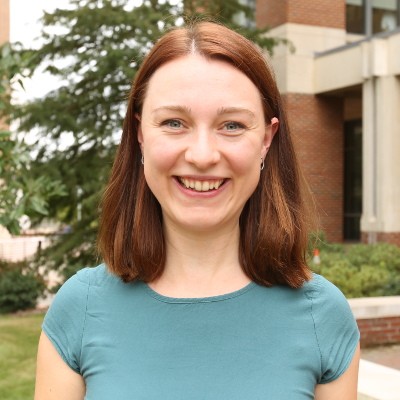
Louisa Temme
Louisa is a Postdoctoral Research Associate in the SGC at the University of North Carolina at Chapel Hill. She is developing chemical probes for understudied protein kinases under the supervision of Prof. David Drewry. Louisa is a pharmacis
…Louisa is a Postdoctoral Research Associate in the SGC at the University of North Carolina at Chapel Hill. She is developing chemical probes for understudied protein kinases under the supervision of Prof. David Drewry. Louisa is a pharmacist and obtained her doctoral degree in medicinal chemistry from Westfälische-Wilhelms-Universität Münster, Germany. In the working group of Prof. Bernhard Wünsch she gained experience in organic synthesis, medicinal chemistry and functional assay establishment during the development of novel neuroprotective molecules for the treatment of Morbus Alzheimer’s and Parkinson’s disease. To identify and analyze drug-target interactions of these negative allosteric modulators for the ifenprodil binding site of the GluN1a/GluN2B NMDA receptor she additionally learned and performed in silico docking and virtual screening of chemical libraries during a research stay at the lab of Prof. Wolfgang Sippl (Martin-Luther-Universität Halle-Wittenberg, Germany).

Madison Edwards
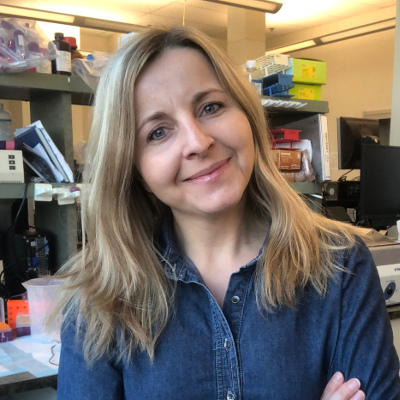
Magdalena Szewczyk
Magda received her M.Sc. degree from University of Lodz (Poland) and PhD degree from McMaster University (Canada). Currently, she is a research associate in the Cell Biology Group at the Structural Genomics Consortium Toronto. At the SGC, M
…Magda received her M.Sc. degree from University of Lodz (Poland) and PhD degree from McMaster University (Canada). Currently, she is a research associate in the Cell Biology Group at the Structural Genomics Consortium Toronto. At the SGC, Magda is developing cellular assays for the validation of chemical probes of epigenetic modifiers and readers as well as researching their role in cancer cell biology. Since joining SGC-Toronto team in 2014, Magda has developed several assays for testing the enzymatic activity of PRMT1,3,5,6,8, 9 as well as SMYD2. She also utilized NanoLuc-Halo tag system for protein-protein interaction assay development of L3MBTL1/histoneH3, NSD3/histoneH3, RBBP4,7/MTA2, YAP1/TEAD1 and HDAC6/ISG15. Other than research Magda loves hiking, camping, traveling and organizing fundraising events. Her open lab book will focus on target validation and assay development for variety of epigenetic targets.

Mandeep Mann
Mandeep graduated from the University of Waterloo with a B.Sc in Honor’s Biochemistry in 2016 and is now a PhD candidate at the University of Toronto, Department of Pharmacology and Toxicology. She is working at the Structural Genomics Co
…Mandeep graduated from the University of Waterloo with a B.Sc in Honor’s Biochemistry in 2016 and is now a PhD candidate at the University of Toronto, Department of Pharmacology and Toxicology. She is working at the Structural Genomics Consortium, supervised by Dr. Matthieu Schapira, developing drug-like inhibitors against oncology targets. When Mandeep is not in the lab, she enjoys playing volleyball with friends, reading and travelling.
USP5 Project
Ubiquitin specific proteases (USPs) are the largest family of deubiquitinases and are responsible for removing ubiquitin from proteins. USPs have been on the radar of the drug discovery community for over a decade for the treatment of diseases such as cancer and neurodegeneration, but, with a few, rare exceptions, efforts to develop catalytic inhibitors have all failed thus far. In addition to the catalytic domain, some USPs, such as USP5, contain a zinc-finger ubiquitin binding domain (Zf-UBD). The goal of this research project is to develop ZnF-UBD chemical probes to see if pharmacologically targeting the non-catalytic domain of USP5 is a valid strategy. To the best of our knowledge, this is the first ever chemical biology open notebook.
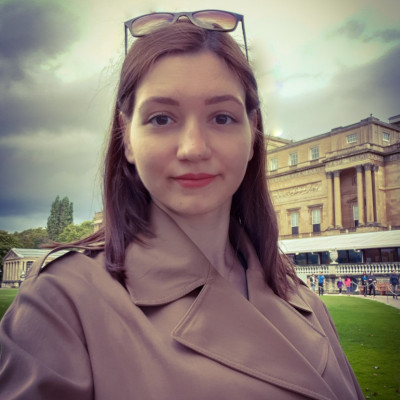
Nergis Imprachim
My name is Nergis Imprachim and I am a research assistant in the lab of Opher Gileadi under the supervision of Joseph Newman at CMD, University of Oxford. I graduated magna cum laude from Koc University in Turkey with Bachelor of Science
…My name is Nergis Imprachim and I am a research assistant in the lab of Opher Gileadi under the supervision of Joseph Newman at CMD, University of Oxford. I graduated magna cum laude from Koc University in Turkey with Bachelor of Science degrees in molecular biology and genetics and chemistry (double major) in 2018. I received my Master of Research degree in molecular and cellular biosciences with a Distinction from Imperial College London in 2020.
Over the last seven years, I worked on several research projects about molecular, biochemical and structural analysis of proteins that have an impact on disease. I am currently investigating the structure and function of medically important proteins to decipher the mechanistic basis of human disease and develop novel drugs. In my free time, I enjoy playing tennis and making cocktails as a chemist playing bartender.

Nicola De Maio
Nicola De Maio studied Mathematics in Italy, and completed his PhD in phyloenetics and population genetics at the VetMedUni Vienna. Between 2013 and 2017 Nicola was a postdoct in the group of Prof Daniel Wilson in Oxford, sutdying within an
…Nicola De Maio studied Mathematics in Italy, and completed his PhD in phyloenetics and population genetics at the VetMedUni Vienna. Between 2013 and 2017 Nicola was a postdoct in the group of Prof Daniel Wilson in Oxford, sutdying within and between-host evolution of viruses and bacteria, and developing methods to infer transmission between individuals and across countries using sequencing and epidemiological data. Nicola is now a Scientist in molecular evolution at the European Bioinformatics Institute (EMBL-EBI) in Hinxton, UK. Nicola develops mathematical models and software to study evolution from DNA sequence data, in particular working in phylogenetic, alignment, and phylogeographic inference.

Oliver Arnolds

Opher Gileadi
I grew up in Israel and studied for my BSc and PhD at the Hebrew University in Jerusalem. I then did a post-doc in Roger Kornberg's lab at Stanford, and started my own group at the Weizmann Institute in Rehovot, Israel. Since 2004 I've been
…I grew up in Israel and studied for my BSc and PhD at the Hebrew University in Jerusalem. I then did a post-doc in Roger Kornberg's lab at Stanford, and started my own group at the Weizmann Institute in Rehovot, Israel. Since 2004 I've been at the Structural Genomics Consortium at the University of Oxford. My team looks at the structure and function of proteins involved in human diseases; we aim to build the tools and knowledge to test the utility of these proteins as drug targets. While focussing for many years on DNA repair and cancer, we are now looking at new targets for Alzheimer's disease and other neurodegenerative diseases.

Peter Stogios
Peter is a Senior Research Associate at BioZone, Department of Chemical Engineering and Applied Chemistry, at the University of Toronto.
A structural biologist by training, he completed his Ph.D. in the Department of Medical Biophysics a
…Peter is a Senior Research Associate at BioZone, Department of Chemical Engineering and Applied Chemistry, at the University of Toronto.
A structural biologist by training, he completed his Ph.D. in the Department of Medical Biophysics at the Ontario Cancer Institute under the supervision of Prof. Gilbert Privé, where he studied the structure and function of a family of transcription factors implicated in tumorigenesis. Peter did a short postdoc with Prof. Alexei Savchenko at BioZone and became a microbiologist. An expert on microbial enzymes, he is the author of over 50 publications and over 230 Protein Databank structures.
Peter currently manages a team of researchers in BioZone’s structural genomics lab, working with Prof. Savchenko’s group at the University of Calgary, which provides protein production, crystallization and structure-function studies for the Center for Structural Genomics of Infectious Diseases (www.CSGID.org), funded by the National Institute of Allergy and Infectious Diseases (NIAID) USA. The lab’s current research interests include molecular mechanisms of microbial pathogenesis, antimicrobial resistance, anti-infective drug discovery, protein engineering and enzyme discovery.
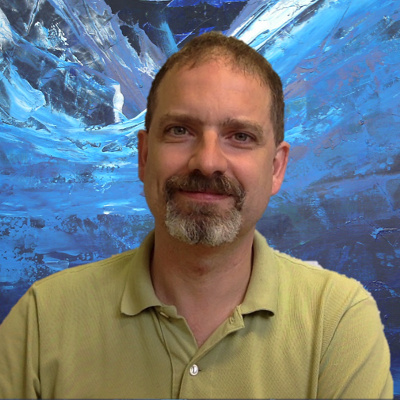
Pietro Roversi
Pietro grew up in Verona, Italy and studied Chemistry at the University of Milano (1987-1993) where he graduated with honours and a passion for structural science. He stayed on in Milano to study for a PhD in structural chemistry under the
…Pietro grew up in Verona, Italy and studied Chemistry at the University of Milano (1987-1993) where he graduated with honours and a passion for structural science. He stayed on in Milano to study for a PhD in structural chemistry under the supervision of Riccardo Destro, working on the multipole and Maximum Entropy modelling of charge densities in crystalline solids (1993-1997). With Gérard Bricogne at the MRC Laboratory of Molecular Biology and at Global Phasing Ltd. (1997-2003) Pietro learnt macromolecular crystallographic theory and computing, and contributed to the writing of the macromolecular crystallography refinement package Buster-TNT (now autoBUSTER).
With Susan Lea at the Biochemistry and Pathology Departments of Oxford University Pietro learnt protein chemistry and determined macromolecular structures of human complement proteins and bacterial proteins involved in infection mechanisms (2003-2012). After a 1-year Ikerbasque Fellowship in Bilbao (Spain) Pietro returned to Oxford in 2013 to join the group of Nicole Zitzmann at the Biochemistry Department, where he determined the first structure of the ER glycoprotein quality control (ERQC) checkpoint enzyme, UGGT.
At Leicester, a 2-year LISCB-WT ISSF Fellowship enables Pietro to start the development of inhibitors of ERQC and ER associated degradation (ERAD) machineries. These inhibitors have the potential to become broad-spectrum rescuers of secretion of responsive mutant glycoproteins in rare disease. As Dr. Strangelove would put it, one day Pietro hopes to train cells to stop checking and love secretion.

Rachel Commander
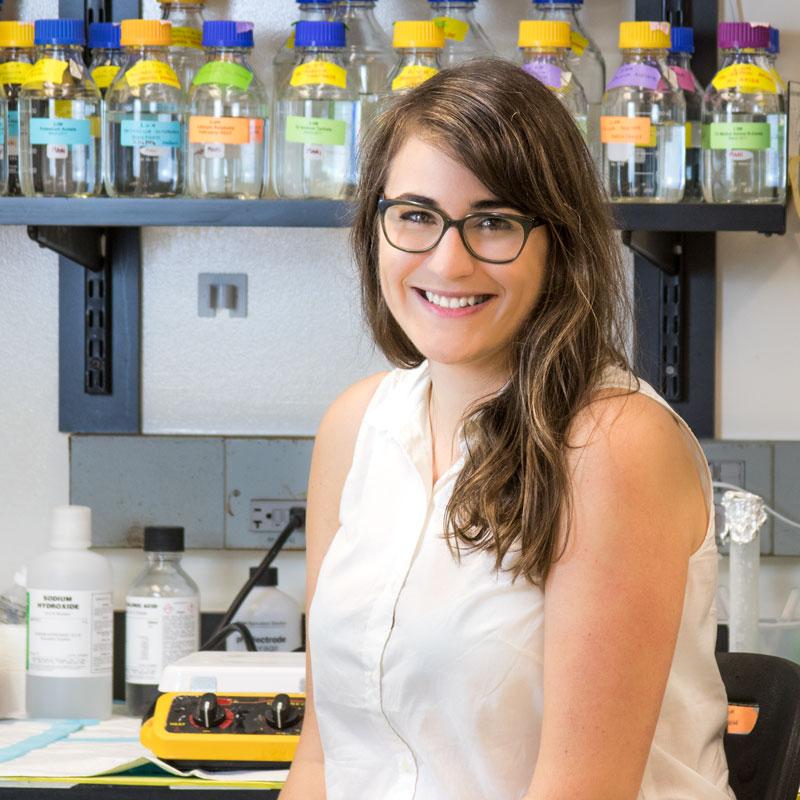
Rachel Harding
Rachel Harding completed her PhD at the University of Oxford and now works for the SGC at the University of Toronto as a Postdoctoral Fellow supervised by Professor Cheryl Arrowsmith. Rachel is funded by the CHDI foundation and is studying
…Rachel Harding completed her PhD at the University of Oxford and now works for the SGC at the University of Toronto as a Postdoctoral Fellow supervised by Professor Cheryl Arrowsmith. Rachel is funded by the CHDI foundation and is studying Huntington’s disease, in particular, researching the protein encoded by the gene mutated in HD patients called huntingtin. Rachel is interested in the 3D structure of the huntingtin protein as well as how it functions in cells and is studying huntingtin protein by both cryo electron microscopy and X-ray crystallography.
Rachel is interested in Open Science and Open Data and actively advocates for scientists to share their research outputs freely and without restriction. Since February 2016, Rachel has put all of her research findings on her Huntington’s disease project into an open notebook, LabScribbles, and curates the LabScribbles data collection on the repository Zenodo. Outside of the lab, Rachel is a keen cyclist and enjoys riding and exploring the Canadian countryside on her Brompton folding-bicycle.
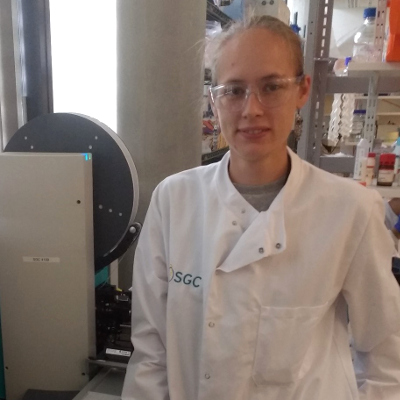
Sabrina Mackinnon
Sabrina completed her undergraduate studies in Bioscience and Biomedical Sciences at Robert Gordon University, Aberdeen with a growing interest in studying the group of rare metabolic disorders known as inborn errors of metabolism. Sabrina
…Sabrina completed her undergraduate studies in Bioscience and Biomedical Sciences at Robert Gordon University, Aberdeen with a growing interest in studying the group of rare metabolic disorders known as inborn errors of metabolism. Sabrina is currently undertaking her DPhil studies at SGC University of Oxford, under the supervision of Wyatt Yue and Paul Brennan. The focus of her project is to develop small molecule therapies for inborn errors of metabolism by substrate reduction and pharmacological chaperoning. When not in the lab, Sabrina enjoys trips to the seaside and reading the most ridiculous science fiction she can find.
Primary hyperoxaluria project
Primary hyperoxalurias are rare genetic disorders caused by inherited mutations that lead to a build-up of glyoxylate, a normal metabolite in amino acid breakdown and production. When glyoxylate is not converted to more useful substances, it accumulates and is converted instead to oxalate, which is very damaging to the kidneys. One potential approach to treating these disorders, is to reduce the production of glyoxylate by inhibiting the enzyme that produces it: hydroxyacid oxidase 1 (HAO1, also called glycolate oxidase). The aim of Sabrina’s project is to identify, characterise and validate small molecule inhibitors of HAO1, combining cutting-edge methods of fragment screening, x-ray crystallography, and chemical biology.
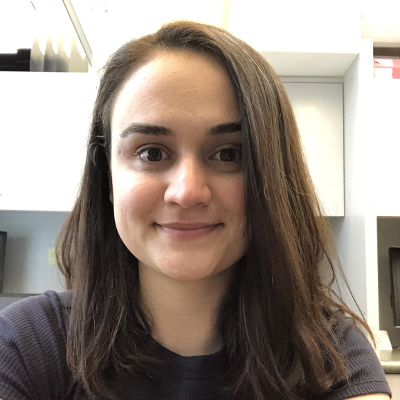
Serap Beldar
Serap Beldar received her B.Sc. degree in Molecular Biology and Genetics from Izmir Institute of Technology, and M.Sc. degree in Computational Sciences and Engineering from Koç University. She recently earned her Ph.D. (in Biological
…Serap Beldar received her B.Sc. degree in Molecular Biology and Genetics from Izmir Institute of Technology, and M.Sc. degree in Computational Sciences and Engineering from Koç University. She recently earned her Ph.D. (in Biological Sciences) from Nanyang Technological University as a Singapore International Graduate Award (SINGA) scholar. During her doctoral studies, she has specialized in the production and biophysical characterization of proteins. Her current research involves structural characterization of histone-modifying enzymes and deciphering molecular interactions with their interacting partners.
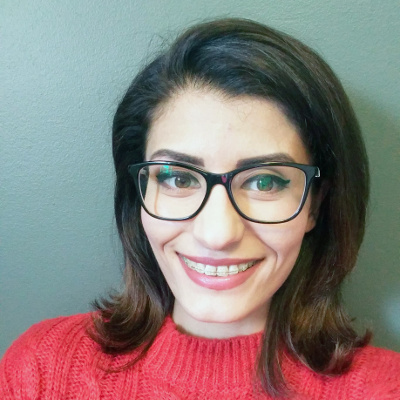
Setayesh Yazdani
Setayesh received her H.B.Sc. from the University of Toronto in the Biomedical Toxicology Specialist program in June 2018. During her fourth thesis project at Sunnybrook Research Institute, she examined the relationship between type 2 diabe
…Setayesh received her H.B.Sc. from the University of Toronto in the Biomedical Toxicology Specialist program in June 2018. During her fourth thesis project at Sunnybrook Research Institute, she examined the relationship between type 2 diabetes mellitus and Alzheimer’s disease by specifically looking at the cognitive scores, anatomical structures, and blood biomarker changes in patients with Alzheimer’s disease. She joined Structural Genomic Consortium (SGC) in 2019 as a M.Sc. student in the department of Pharmacology and Toxicology, University of Toronto. At SGC, Setayesh is currently working on a project related to Enhancer of Zeste Homologs inhibitory protein (EZHIP), an important protein in Posterior fossa type A (PFA) ependymomas oncogenicity pathway. Her goal is to find out if there is a structural domain within EZHIP which can be targeted by a ligand. If that is the case, using PROTAC design, she hopes to target EZHIP for degradation.
Setayesh concurrently works on another bioinformatics project called the Ligandable Human Genome. For that she uses the software tool ICM where she can integrate and analyze different sources of data such as from Protein Data Bank, DrugBank, and Cancer Dependency Map Databases from Sanger and Broad Institutes.
Outside the lab, She is an enthusiastic fitness instructor and works as a coach at Fight Fitness Markham on her weekends. She enjoys leadership activities on campus; she is one of the first-year representatives of her graduate pharmacology cohort. At Iranian Student Association at UofT, Setayesh focuses on membership outreach by increasing community engagement through their mentorship program and other social events.

Shiva Guduru
Shiva Krishna Reddy Guduru completed his doctoral studies in Chemistry at Dr. Reddy's Institute of Life Sciences (DRILS), an associate institute of the University of Hyderabad, under the guidance of Dr. Prabhat Arya. His Ph.D. thesis work w
…Shiva Krishna Reddy Guduru completed his doctoral studies in Chemistry at Dr. Reddy's Institute of Life Sciences (DRILS), an associate institute of the University of Hyderabad, under the guidance of Dr. Prabhat Arya. His Ph.D. thesis work was focused on the development of novel methods to build tetrahydroquinoline-derived natural product-inspired macrocyclic architectures and rapamycin-derived hybrid natural products. In 2015, he joined as a post-doctoral researcher in the Center for Drug Discovery, Baylor College of Medicine. There, he had worked on methodology development of the synthesis of novel, sp3-enriched small molecule library for Fragment-Based Drug Discovery (FBDD) under the guidance of Dr. Damian Young. Since 2018, he has been continuing his post-doctoral research in the Center for Integrative Chemical Biology and Drug Discovery (CICBDD), University of North Carolina. His research focuses on developing a target class-focused DNA-encoded library (DEL) to discover new chemical probes for multivalent chromatin reader proteins under the guidance of Dr. Ken Pearce and Dr. Stephen Frye. Currently, he has been working on development of a chemical probe for Alzheimer’s disease under the guidance of Dr. Xiaodong Wang. He has a strong passion for undertaking research projects at the interface of modern organic synthesis, medicinal chemistry, and chemical biology. A complete list of Shiva’s publications can be found here.

Stephanie Tang
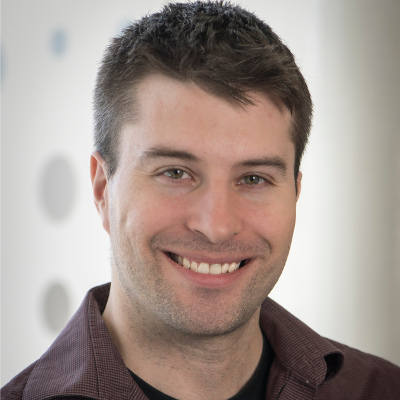
Stephen R. Armstrong
I first began studying cancer under Dr. Carita Lanner at the Northern Ontario School of Medicine, investigating the transcriptomes of ovarian cancer cell lines that had acquired drug resistance to broad range chemotherapeutics. Acquired res
…I first began studying cancer under Dr. Carita Lanner at the Northern Ontario School of Medicine, investigating the transcriptomes of ovarian cancer cell lines that had acquired drug resistance to broad range chemotherapeutics. Acquired resistance to more than one drug (ex. dual-resistant cell lines) often proved to be sufficient for development of multi-drug resistance, a process where cancer cells become resistant to multiple broad-range chemotherapeutics including those it has not been previously exposed to. This phenomenon highlighted a common problem with nonspecific drugs used to treat common cancers.The primary focus of modern day cancer treatment involves targeted therapy, in which drugs are designed to exploit specific processes that cancer cells rely on, avoiding the induction broad-range resistance and toxicity associated with classical chemotherapy. These often seek to hobble key oncogenic processes that drives tumor proliferation in specific cancer types (ex. Herceptin targeting the HER-2 receptor in HER-2+ breast cancer), or enable the function of tumor suppressor proteins (ex. MDM2 interference to induce activation of the p53 tumor suppressor protein). The major problem with targeted therapy is that most cancers lack targeted therapy options. In 2011, I travelled to Edmonton, Alberta to take up a doctoral position under Dr. Roger Leng studying the p53 tumor suppressor family, a family that is dysregulated in roughly 80% of all cancers, and is the most striking commonality shared between cancers in general. Developing targeted therapy options for these family members would be ground-breaking in the treatment of cancer, however, transcriptional factors have proven difficult to exploit. During my studies there, I investigated the regulation of the metastatic TAp63 protein by the ubiquitin-proteasome system and discovered a cross-talk regulatory pathway between proteasome-mediated degradation and the heat shock response pathway that proved to be a major regulator of this transcription factor, and therefore, a possible anti-metastatic target. After graduating from the University of Alberta in 2016, I sought a postdoctoral position at the Hospital for Sick Children (Toronto, Ontario), and was successful in gaining one under the lab of Dr. Michael Taylor studying childhood brain malignancies, the most predominant of which being medulloblastoma. Children suffering from medulloblastoma have a specific need for targeted therapy options because radiation treatment common used to treat these cancers is associated with severe developmental defects and reduction in quality of life. The major problem is the most metastatic form of medulloblastoma lacks clear mutational drivers. Despite this problem, epigenetic aberrations have been observed in these cells, and our hypothesis is that these epigenetic defects are driving tumorigenesis. To this end, I am collaborating with the Structural Genomics Consortium (University of Toronto) under Dr. Panagiotis Prinos, to screen medulloblastoma cells with an ever-expanding library of probes designed to interfere with specific epigenetic proteins. From this research, I hope to drive progress forward in discovering and developing targeted therapies for children suffering from this disease.
2008 – B.Sc. Biomedical Biology (Laurentian University – Sudbury, Ontario) 2010 – M.Sc. Biology (Laurentian University – Sudbury, Ontario) 2016 – Ph.D. Medical Sciences (University of Alberta – Edmonton, Alberta)

Suzanne Ackloo
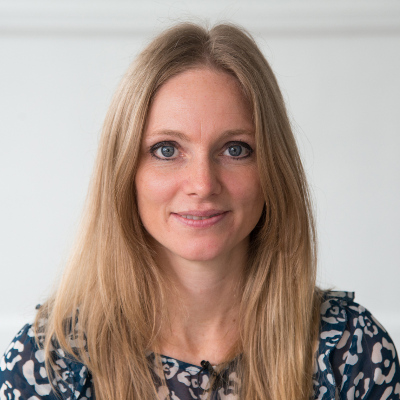
Tamara Maiuri
Tamara Maiuri completed her PhD at the University of Toronto and currently works as a Research Associate in Dr. Ray Truant's group at McMaster University, Hamilton, Canada. The Truant lab studies the normal biological functions of the hunti
…Tamara Maiuri completed her PhD at the University of Toronto and currently works as a Research Associate in Dr. Ray Truant's group at McMaster University, Hamilton, Canada. The Truant lab studies the normal biological functions of the huntingtin protein in hopes of understanding how they may be disrupted upon inheritance of the expanded huntingtin gene that causes Huntington’s disease. Tamara is investigating the role of the huntingtin protein in the process of DNA repair, in a project funded by the HDSA Berman/Topper Fellowship. She has openly shared her results in blog form (raytruantlab.ca/real-time-open-reports/) and through the Truant lab Zenodo community since 2017. Tamara is also a member of the band Eli & the Straw Man, who has partnered with the Huntington Society of Canada since 2016 to raise funds and awareness for Huntington’s disease through their music.
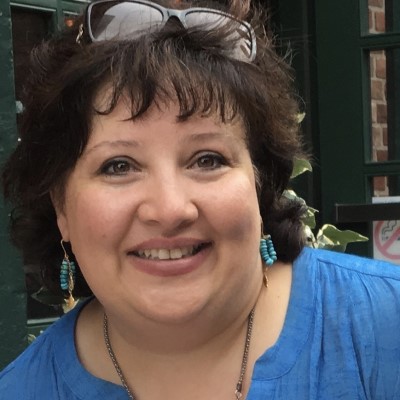
Taraneh Hajian
With a Masters degree in molecular virology, Taraneh joined SGC Toronto at 2008. Working as a technician in the Molecular Biophysics group, she gained more than 10 years of experience in different aspects of molecular biology and biochemist
…With a Masters degree in molecular virology, Taraneh joined SGC Toronto at 2008. Working as a technician in the Molecular Biophysics group, she gained more than 10 years of experience in different aspects of molecular biology and biochemistry including planning, developing and implementing large scale expressions and purification of many proteins including epigenetic targets, transcription factors, enzymes and multimeric complex proteins. The produced proteins have since been used in a myriad of research projects and collaborations, leading to discovery of numerous molecular probes.
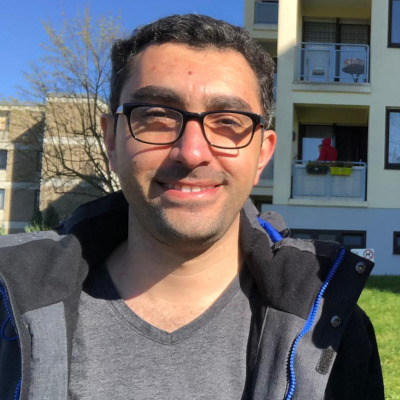
Thiago dos Santos
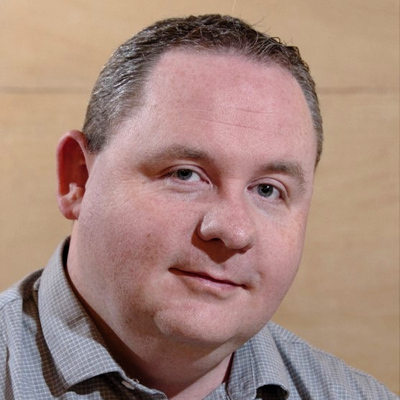
Thomas M. Durcan
As an assistant professor at the Montreal Neurological Institute (MNI) and McGill University https://www.youtube.com/watch?v=kuO2IKE4JME), my research focus is on applying patient-derived stem cells towards the development of phenotypic dis
…As an assistant professor at the Montreal Neurological Institute (MNI) and McGill University https://www.youtube.com/watch?v=kuO2IKE4JME), my research focus is on applying patient-derived stem cells towards the development of phenotypic discovery assays and 3D mini-brain models (https://www.youtube.com/watch?v=zjOS_trumik) for both neurodegenerative and neurodevelopmental disorders. As group leader of the iPSC platform at the Montreal Neurological Institute (MNI), I oversee a team of 30 research staff and students and growing, committed to applying novel stem cell technology, combined with CRISPR genome editing, mini-brain models and new microfluidic technologies towards elucidating the underlying causes of these complex disorders. Leading the SGC tissue platform, NeuroSGC; I oversee a team committed to assay development, in parallel with leading the establishment of NeuroCDRD, towards the automation of our open assays for small molecule screens. In addition, I am also part of antibody validation efforts (https://www.als-rap.org) between the MNI, Oxford and the Karolinska to generate CRISPR KO cell-lines for validating commercial antibodies against high-value ALS targets. Combined with new approaches in the group towards building multiomic profiles on the patient-derived IPSC cells within the group, the long term strategy over the coming years is to identify new personalized precision therapies that can be applied towards building clinical trials on a dish. Further information on the iPSC platform is found here (http://www.mcgill.ca/ipsquebec-mni/)
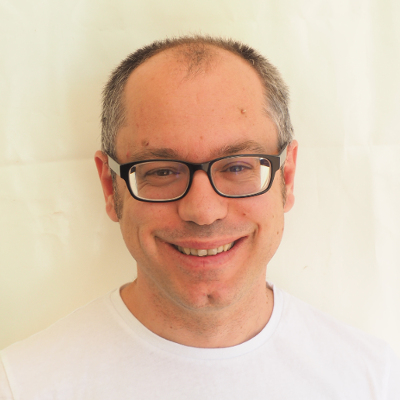
Tobias Krojer
Tobias works as a Team Leader in the PX group at SGC Oxford. He joined Frank’s group in 2009 and the main focus of his research is fragment-based lead discovery and crystallographic software development.
Tobias studied Biotechnolog
…Tobias works as a Team Leader in the PX group at SGC Oxford. He joined Frank’s group in 2009 and the main focus of his research is fragment-based lead discovery and crystallographic software development.
Tobias studied Biotechnology at FH Weihenstephan (Germany) in the late nineties. He trained as a structural biologist at the Max Planck Institute of Biochemistry in Martinsried (Germany) and received a PhD from Cardiff University in 2005. Afterwards, he worked as a postdoc at the Institute of Molecular Pathology in Vienna (Austria).
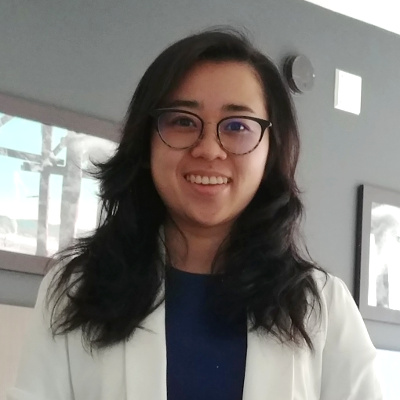
Victoria Vu
Victoria received her PhD from the University of Toronto, Canada. Her grad studies focused on the effects of natural variation in genetic backgrounds on perturbed phenotypes using C. elegans as a model organism. Victoria works in Dalia Bars
…Victoria received her PhD from the University of Toronto, Canada. Her grad studies focused on the effects of natural variation in genetic backgrounds on perturbed phenotypes using C. elegans as a model organism. Victoria works in Dalia Barsyte-Lovejoy’s group at SGC Toronto focusing on the development of cellular assays for E3 ligases.

Yuanye Yan
Phoebe is a PhD student at the University of Toronto. She in very interested in studying the consequences of NMDA receptor deficiency and started to work under Dr. Amy Ramsey since undergraduate. She first looked at potential alterations in
…Phoebe is a PhD student at the University of Toronto. She in very interested in studying the consequences of NMDA receptor deficiency and started to work under Dr. Amy Ramsey since undergraduate. She first looked at potential alterations in neurogenesis pathways in Grin1 knock down mice and is currently focused on analyzing the metabolic profile of cells from mutant mouse brain. Her goal is to look for potential treatments to restore metabolic dysfunction in the cells.
Past Team Members
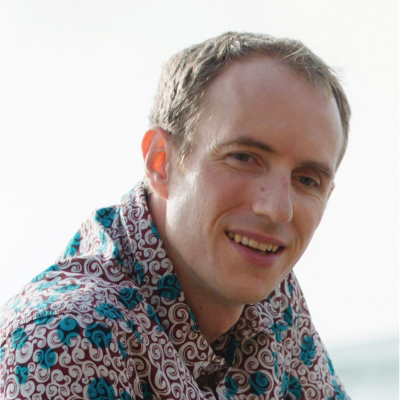
Antoine Claessens
Antoine Claessens is an INSERM researcher working on malaria genomics and transcriptomics. Biochemist by training, his interest in the Plasmodium parasite started with his PhD at Edinburgh university during which he developed an in vitro mo
…Antoine Claessens is an INSERM researcher working on malaria genomics and transcriptomics. Biochemist by training, his interest in the Plasmodium parasite started with his PhD at Edinburgh university during which he developed an in vitro model for cerebral malaria. After a post-doc at the Sanger Institute on parasite mutation rate using whole genome sequencing, he was awarded a fellowship based at the London School of Hygiene & Tropical Medicine and at the MRC-Gambia. In Gambia, he recruited a unique cohort of P. falciparum infected asymptomatic carriers to study host-pathogen interactions over a long period of time. From the bench to bioinformatics via the bush, he is now an all-rounder malariologist starting his own group at MIVEGEC, Montpellier, France.
He recently joined the ‘Open Science movement’ as he is convinced that better sharing of data and methods across scientists can only speed up the elimination of malaria.
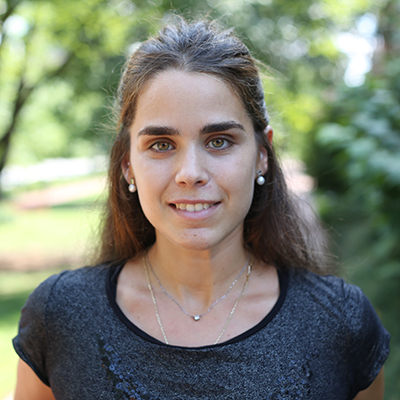
Carla Alamillo
Hi, my name is Carla and I am from Spain. I grew up in the beautiful region of Catalonia and chose to study chemistry at the University of Barcelona. My undergraduate and Master’s research focused on the use of palladium to catalyze the s
…Hi, my name is Carla and I am from Spain. I grew up in the beautiful region of Catalonia and chose to study chemistry at the University of Barcelona. My undergraduate and Master’s research focused on the use of palladium to catalyze the synthesis of heterocyclic compounds. During my studies, I developed a passion for organic synthesis, which ultimately drove me toward pursuing a PhD degree.
So, I moved from sunny Spain to the Northern reaches of the UK to complete my PhD studies at University of Strathclyde, Glasgow, under the supervision of Professor Nicholas Tomkinson. My studies included a 3 month industrial placement at GlaxoSmithKline, Stevenage, in their SmartLab with Dr. Matthew Campbell. During my time as a PhD student I learnt how to multitask and how to work under a tight schedule in the fast-paced world of research. My PhD research was based on an environmentally friendly method of modifying alkenes using spirocyclic peroxides.
Currently, I am a Postdoctoral Research Associate at Structural Genomics Consortium at University of North Carolina of Chapel Hill (SGC-UNC), working under the supervision of Dr. David Drewry. It is nice to be in a warmer climate again! My research, which is co-funded by the NIH and Luceome Biotechnolgies, involves the design and synthesis of small-molecule inhibitors for understudied (also called “dark”) kinases, specifically the CLK family kinases. My compounds will be screened initially at Luceome, and the most promising inhibitors will be optimized into chemical probes for these dark kinases.
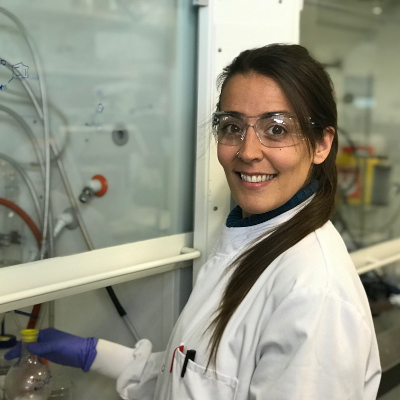
Carmen Jimenez Antunez
Carmen is a postdoctoral researcher at the SGC Oxford. She completed her PhD in Medicinal Chemistry at Cardiff University. Her doctoral work focused on the design, synthesis and evaluation of new prodrugs that would enhance the anticancer a
…Carmen is a postdoctoral researcher at the SGC Oxford. She completed her PhD in Medicinal Chemistry at Cardiff University. Her doctoral work focused on the design, synthesis and evaluation of new prodrugs that would enhance the anticancer activity of nucleoside analogues.
In 2018 she joined the SGC working in the lab of Professor Paul Brennan and Dr Opher Gileadi. Carmen works as part of a multidisciplinary project for the development of target enable packages helping the discovery of drug development for Alzheimer Research.
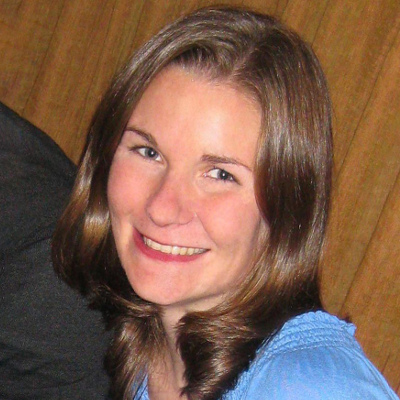
Carolyn Marks
Carolyn Marks is Biotechnology Research Engineer at SGC Karolinska in Stockholm, Sweden. She obtained her PhD from the NIH-Karolinska Collaborative Doctoral Program in Neuroscience. Carolyn completed her Post-Doc at Karolinska & Science for
…Carolyn Marks is Biotechnology Research Engineer at SGC Karolinska in Stockholm, Sweden. She obtained her PhD from the NIH-Karolinska Collaborative Doctoral Program in Neuroscience. Carolyn completed her Post-Doc at Karolinska & Science for Life Laboratory characterizing the ubiquitin proteasome system as therapeutic targets in neurodegenerative diseases. Carolyn has recently joined Susanne Gräslund and the SGC Karolinska Recombinant Antibody Production Team. At SGC Karolinska, Carolyn will primarily produce and validate gold standard antibodies for the ALS Reproducible Antibody Platform. Carolyn will merge the expertise of the SGC with the Human Antibody Therapeutics facility at the Drug Development and Discovery Platform of Science for Life Laboratory in Stockholm to generate, identify, and characterize the highest quality, renewable, recombinant antibodies for ALS-relevant antigens and make them freely available to the ALS research community.
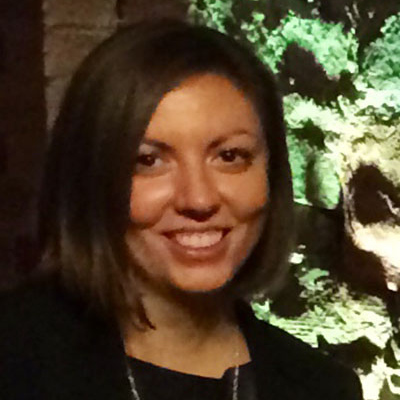
Genna Luciani
Genna received her PhD from the University of Toronto in the department of Molecular Genetics. Her doctoral research focused on small molecule identification and characterization using the nematode C. elegans as a model system. She joined
…Genna received her PhD from the University of Toronto in the department of Molecular Genetics. Her doctoral research focused on small molecule identification and characterization using the nematode C. elegans as a model system. She joined the SGC in 2015 in the cell biology group at SGC Toronto. In collaboration with Dr. Mark Minden’s lab, she is investigating the effect of SGC’s epigenetic chemical probes in poor prognosis acute myeloid leukemia patient cells.
Her open lab notebook will focus on characterizing chemical probes targeting the polycomb repressive complex 2 (PRC2) in AML. This project is funded by the Leukemia and Lymphoma Society of Canada (LLSC). Outside of the lab, Genna enjoys all things food related, reading, crafting and obsessing over her many favourite animals.

Haresh Ajani
Haresh received his Ph.D. in computational chemistry from the Palacky University, and Institute of Organic Chemistry and Biochemistry AS CR, Prague, Czech Republic in 2018. He completed his Ph.D. in structure based drug design, focusing on
…Haresh received his Ph.D. in computational chemistry from the Palacky University, and Institute of Organic Chemistry and Biochemistry AS CR, Prague, Czech Republic in 2018. He completed his Ph.D. in structure based drug design, focusing on receptor-ligand scoring functions based on semi-empirical quantum mechanics (SQM). He joined the Research Informatics group at SGC-Toronto in 2019 as a post-doctoral fellow, where he is contributing to the discovery of ligands for proteins involved in the ubiquitin proteasome system, and assesses in silico methods for the structure-based design of proteolysis targeting chimeras (PROTACs).
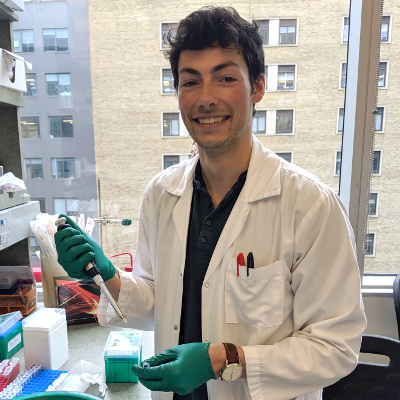
Jacob McAuley
Jacob McAuley is going into his third year at the University of Toronto completing his double major in Molecular Genetics and Immunology. Over the Summer, he will be working in the SGC under the guidance of Dr. Rachel Harding in the lab of
…Jacob McAuley is going into his third year at the University of Toronto completing his double major in Molecular Genetics and Immunology. Over the Summer, he will be working in the SGC under the guidance of Dr. Rachel Harding in the lab of Dr. Cheryl Arrowsmith. During his time at the SGC, he will focus on the huntingtin project, working to purify possible interaction partners of Huntingtin protein to aid in the understanding of its functions within cells. Mutations in this protein result in the development of Huntington’s Disease, a rare neurological disorder that currently has no cure. In the future, Jacob McAuley plans to pursue a carrier in the sciences with the eventual goal of obtaining a Ph.D. centered around genetic diseases such as Huntington’s.
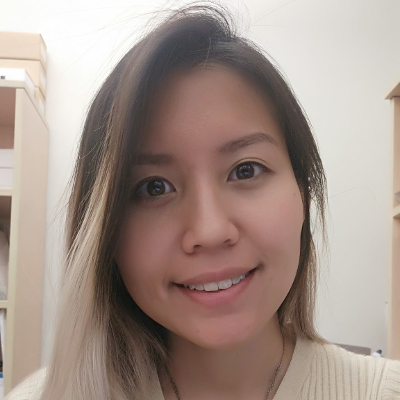
Jolene Ho
Jolene Ho obtained her Ph.D. in Cancer Biology under Prof Lorenz Poellinger’s lab at the Cancer Science Institute (CSI) of Singapore, National University of Singapore (NUS). After a postdoc in the same lab, she worked in Veredus Laborator
…Jolene Ho obtained her Ph.D. in Cancer Biology under Prof Lorenz Poellinger’s lab at the Cancer Science Institute (CSI) of Singapore, National University of Singapore (NUS). After a postdoc in the same lab, she worked in Veredus Laboratories, a diagnostics company in Singapore. Currently, she is a postdoctoral fellow at the Structural Genomics Consortium (SGC) in Toronto, in the lab of Takis Prinos.
Her projects are mostly focused on the role of regulatory proteins in cancer and other neurological disorders, and she has been studying the effects of molecular inhibitors on various regulators through methods such as qPCR, Western blotting, tissue culture and other functional in vitro assays. Currently, she is investigating mutations in huntingtin (HTT), which are heavily implicated in the onset of Huntington’s disease.
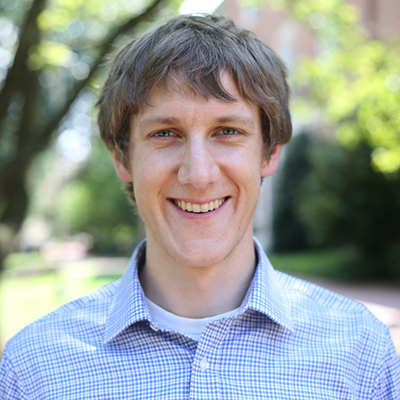
Kaleb Naegeli
Kaleb Naegeli studied neuroscience and biology at Indiana University and subsequently completed in Ph.D. at Duke University in Molecular Cancer Biology in the laboratory of David Sherwood. At Duke, Kaleb studied cell invasion through extrac
…Kaleb Naegeli studied neuroscience and biology at Indiana University and subsequently completed in Ph.D. at Duke University in Molecular Cancer Biology in the laboratory of David Sherwood. At Duke, Kaleb studied cell invasion through extracellular matrix and the membrane trafficking events essential to facilitate this process. He identified novel cellular structure used to facilitate invasion. Through his undergraduate and graduate training, Kaleb has developed an interest in cancer biology, cell invasion, and the biology of extracellular matrix, which he has taken to his current position as a post-doctoral research associate in the UNC Catalyst for Rare Diseases. Here he has active research projects on chordoma (a rare bone cancer) and Vascular Ehlers-Danlos Syndrome (a rare extracellular matrix/connective tissue disorder). Outside of the lab, Kaleb enjoys cycling, hiking, and board games. He can be found at www.linkedin.com/in/kmnaegeli and contacted at knaegeli@unc.edu.

Megha Abbey
I did my Bachelor’s and Master’s studies in India in Microbiology and Biotechnology, respectively and then moved to Germany for my PhD in Biochemistry from Hannover Medical School. My doctoral work was to characterize a cytoskeletal pro
…I did my Bachelor’s and Master’s studies in India in Microbiology and Biotechnology, respectively and then moved to Germany for my PhD in Biochemistry from Hannover Medical School. My doctoral work was to characterize a cytoskeletal protein, SEPT7, biochemically and functionally, and study its role in cytokinesis. I also developed a bioluminescent assay to monitor protein-protein interaction in living adherent cells.
I joined SGC Toronto for my postdoc in Sept, 2016. Here, I focus on the development of in vitro protein-peptide interaction assays, including HDAC4 and 11, which are class IIa and class IV histone deacetylases respectively. HDAC4 plays an important role in cell proliferation and is believed to be associated with several types of cancers. HDAC11 is expressed only in a few tissues and has been shown to play important roles in several cellular processes, including cell cycle progression and the negative epigenetic regulation of T-cell effector function. Similar to other members of the HDAC family, developing specific inhibitors for HDAC4 and 11 will be a challenge.
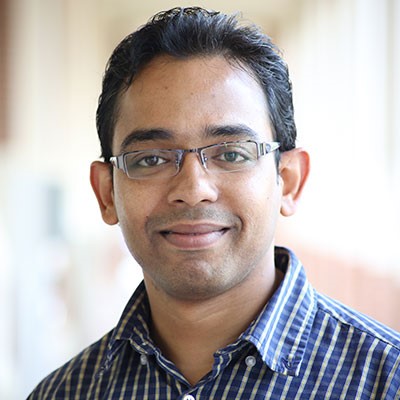
Nirav Kapadia
I joined the Structural Genomics Consortium at the University of North Carolina, Chapel Hill (SGC-UNC) as a post doctoral research associate in March 2016. I am working primarily on the design and synthesis of inhibitors of the dark kinases
…I joined the Structural Genomics Consortium at the University of North Carolina, Chapel Hill (SGC-UNC) as a post doctoral research associate in March 2016. I am working primarily on the design and synthesis of inhibitors of the dark kinases AAK1/BIKE and PRKD. I have also synthesized some covalent AAK1/GAK inhibitors, which may be useful as host targeted antiviral agents. My chemistry also contributes to the team’s work on the Kinase Chemogenomic Set (KCGS).
Before joining the SGC-UNC, I completed my BS degree in Pharmacy at Sardar Patel University, Gujarat – India followed by a Master’s degree in chemistry at Fairleigh Dickinson University in New Jersey. Afterwards, I moved to Hunter College at the City University of New York to complete my PhD under the supervision of Dr. Wayne Harding. My doctoral research involved the synthesis of analogs of the aporphine natural product Nantenine that have activity on serotonin receptors.
My personal research interest is the design, synthesis and evaluation of biologically relevant small molecules. Outside the lab, I enjoy travelling as well as watching cricket and Bollywood dramas.
nirav.kapadia@unc.edu
https://www.linkedin.com/in/niravkapadia
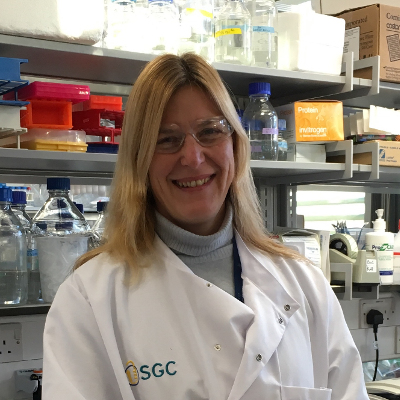
Roslin Adamson
Roslin completed her DPhil in the Department of Biochemistry at Oxford University working on the interactions between G protein-coupled receptors and G proteins. She now works at the SGC in Oxford as a post-doctoral research associate super
…Roslin completed her DPhil in the Department of Biochemistry at Oxford University working on the interactions between G protein-coupled receptors and G proteins. She now works at the SGC in Oxford as a post-doctoral research associate supervised by Alex Bullock.
She was funded by CHDI initially to work on the structural biology of KEAP1 bound to an E3 ubiquitin ligase, and the involvement of this complex in Huntington’s disease. She is now funded by FOP Friends and M4K Pharma and is working on ACVR1/ALK2, a protein involved in Fibrodysplasia Ossificans Progressiva (FOP), a rare connective tissue disease. This work includes solving the 3D x-ray crystallography structure of the protein bound to various different small compounds, with the aim to find potential inhibitor compounds for development into drugs. It also includes developing activity assays for the protein so that we can screen more compounds. In her spare time Roslin is a keen sculptor of tree-like objects.

Sean O'Byrne
Sean is a medicinal chemistry post-doctoral researcher in the Structural Genomics Consortium in UNC. He has a keen interest in the synthesis and applications of protein inhibitors and activity-based probes to elucidate drug targets and id
…Sean is a medicinal chemistry post-doctoral researcher in the Structural Genomics Consortium in UNC. He has a keen interest in the synthesis and applications of protein inhibitors and activity-based probes to elucidate drug targets and identify therapeutic opportunities. He is also interested in drug repurposing, especially using human kinase inhibitors to target the kinome of neglected tropical diseases.
He has extensive experience in route design, multistep synthesis, purification and characterization of complex small molecules, as well as expertise in the design and synthesis of BODIPY fluorescent dyes. During his PhD research in the University of Glasgow, he worked on two distinct projects. He developed an effective anti-parasitic drug delivery system which selectively targets infected host cells. His second project involved the synthesis of self-reporting activity-based probes for kinases, allowing for detection of covalent bond formation between proteins and ligands.
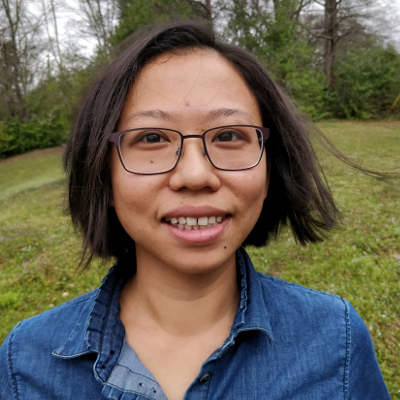
Wen Yih Aw
Wen completed her Ph.D. in Molecular Biology at Princeton University studying how cells establish a sense of direction within a 2D plane. She is now a Postdoctoral Research Associate at the UNC Catalyst for Rare Diseases, developing a dual-
…Wen completed her Ph.D. in Molecular Biology at Princeton University studying how cells establish a sense of direction within a 2D plane. She is now a Postdoctoral Research Associate at the UNC Catalyst for Rare Diseases, developing a dual-vector gene therapy strategy for Dravet Syndrome.
Dravet Syndrome is a rare and severe form of epilepsy that begins in infancy. It is commonly caused by haploinsufficiency in scn1a gene, a gene that codes for voltage-gated sodium channel. Specifically, her project will focus on the development of a protein trans-splicing system that allows us to bypass the packaging size limit of AAV vectors to enable gene therapy for Dravet Syndrome.
